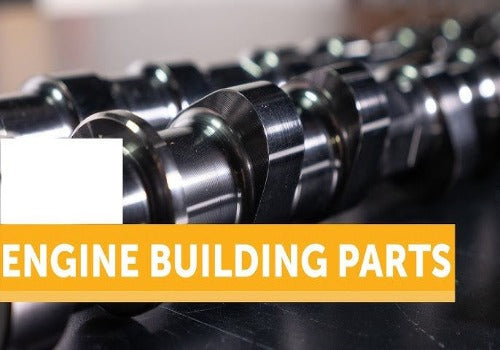
Hpacademy Engine Building Fundamentals Course
The Engine Building Fundamentals course will give you the knowledge, skills, and confidence to correctly assemble engines while avoiding costly mistakes. You will learn about the critical tolerances and clearances in the engine, how to how to decide on the correct clearances for your application, and see how to use specialised measuring equipment to confirm the clearances are correct. You’ll learn about the common machining operations that will be required for an engine assembly and this will allow you to speak the same language as the engine machinist when you’re specifying the work required. The concepts presented in this course are the fundamental core principles that are applicable to any engine assembly job. Regardless whether you’re assembling a Mitsubishi 4G63, a Toyota 2JZ, or a GM LS3, the lessons learned in this course will be 100% applicable to you. This course is theory-based, and contains the knowledge and techniques we believe are essential foundations to anyone interested in assembling engines. Once you’ve completed this course we recommend our Practical Engine Building course which takes these principles and applies them in real engine assembly worked examples that you can follow along. This course assumes that you will be working with an automotive machine shop in order to perform the raw machining of your engine ready for assembly. This course doesn’t cover in detail the process of machining an engine block or engine components - This work is beyond the realm of the home enthusiast and general performance workshop as it requires potentially hundreds of thousands of dollars worth of specialty equipment as well as extensive experience in how to correctly operate it. WHAT YOU WILL LEARN What engine blueprinting is Essential engine machining processes How to use precision measuring equipment How to select the correct clearances for your application How to file piston ring end gaps How to check bearing oil clearances Course Curriculum INTRODUCTIONIntroductionHow To Use This CourseDisclaimerEngine Building And Engine BlueprintingDocumentationImperial And Metric UnitsENGINE ANATOMYThe 4 Stroke ProcessEngine BlockRotating AssemblyCylinder HeadValve TimingCompression RatioRod To Stroke RatioENGINE MACHINING BASICSBoring/Honing & Torque Plate HoningLine Boring / Line HoningDeck PreparationCrack TestingComponent BalancingCrankshaft PolishingCrankshaft GrindingChecking For Size And StraightnessCylinder Head MachiningFASTENER 101Bolt Clamping ForceStuds VS BoltsFastener LubricationTOOLS OF THE TRADEPrecision And AccuracyMicrometerHow To Use A MicrometerBore GaugeHow To Use A Bore GaugeFeeler BladesHow To Use Feeler BladesStretch GaugeHow To Use A Stretch GaugeRing FileHow To Use A Ring FileRing CompressorHow To Use A Ring CompressorDial Gauge And Magnetic BaseHow To Use A Dial Gauge & Mag BaseTorque WrenchHow To Use A Torque WrenchAngle GaugeHow To Use An Angle GaugeValve Spring CompressorEngine StandHead StandCLEARANCES AND TOLERANCESEngine Bearing ClearancesMeasuring Bearing ClearancesUsing PlastigaugeHow To Use PlastigaugePiston Ring End GapsFiling Piston Ring End GapsPiston To Bore ClearanceMeasuring Piston To Bore ClearancePiston To Head ClearanceMeasuring Piston To Head ClearancePiston To Valve ClearanceMeasuring Piston To Valve ClearanceThrust ClearanceMeasuring Thrust ClearanceENGINE LONG BLOCK ASSEMBLYIntroductionEngine Block PreparationPreparing Threaded HolesEngine Component CleaningCrankshaft InstallationInstalling Rings On PistonsInstalling Pistons On ConrodsInstalling Piston AssemblyHead InstallationENGINE BREAK INEngine Break In